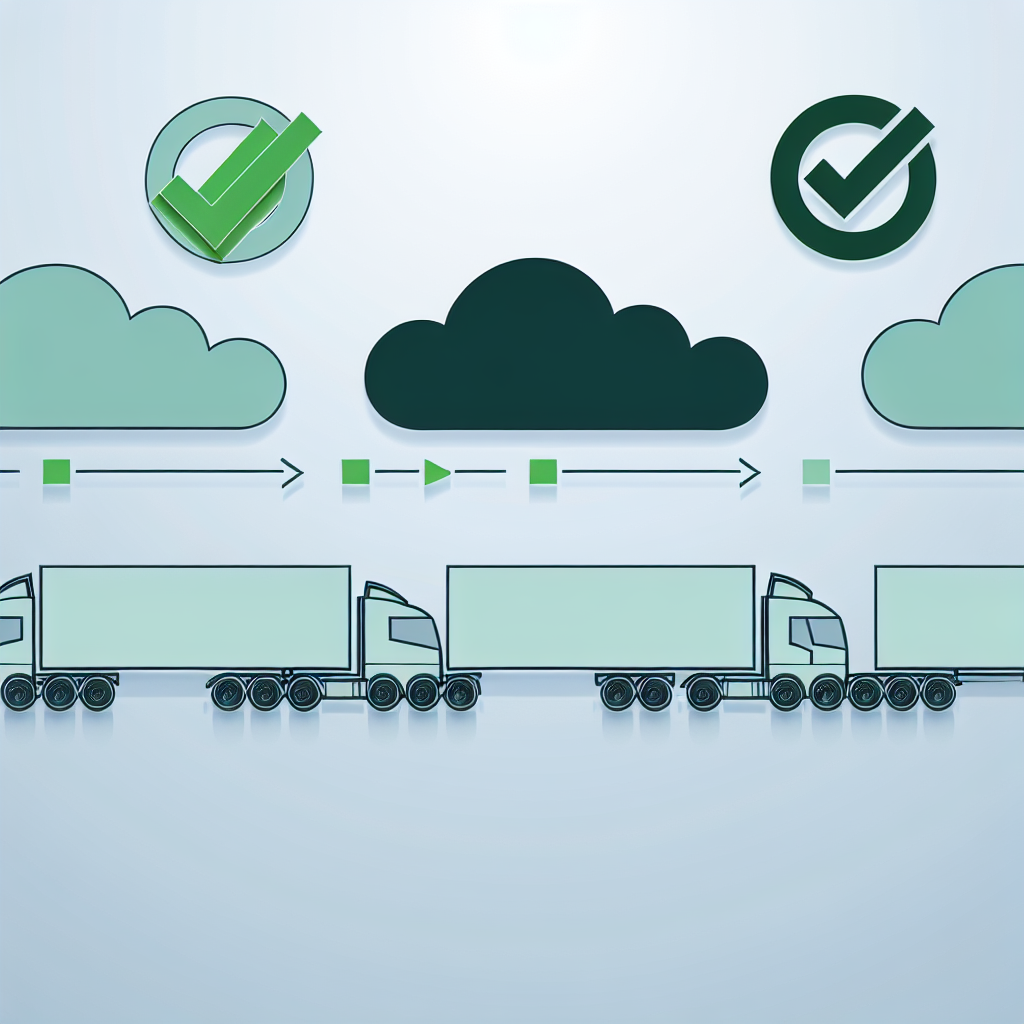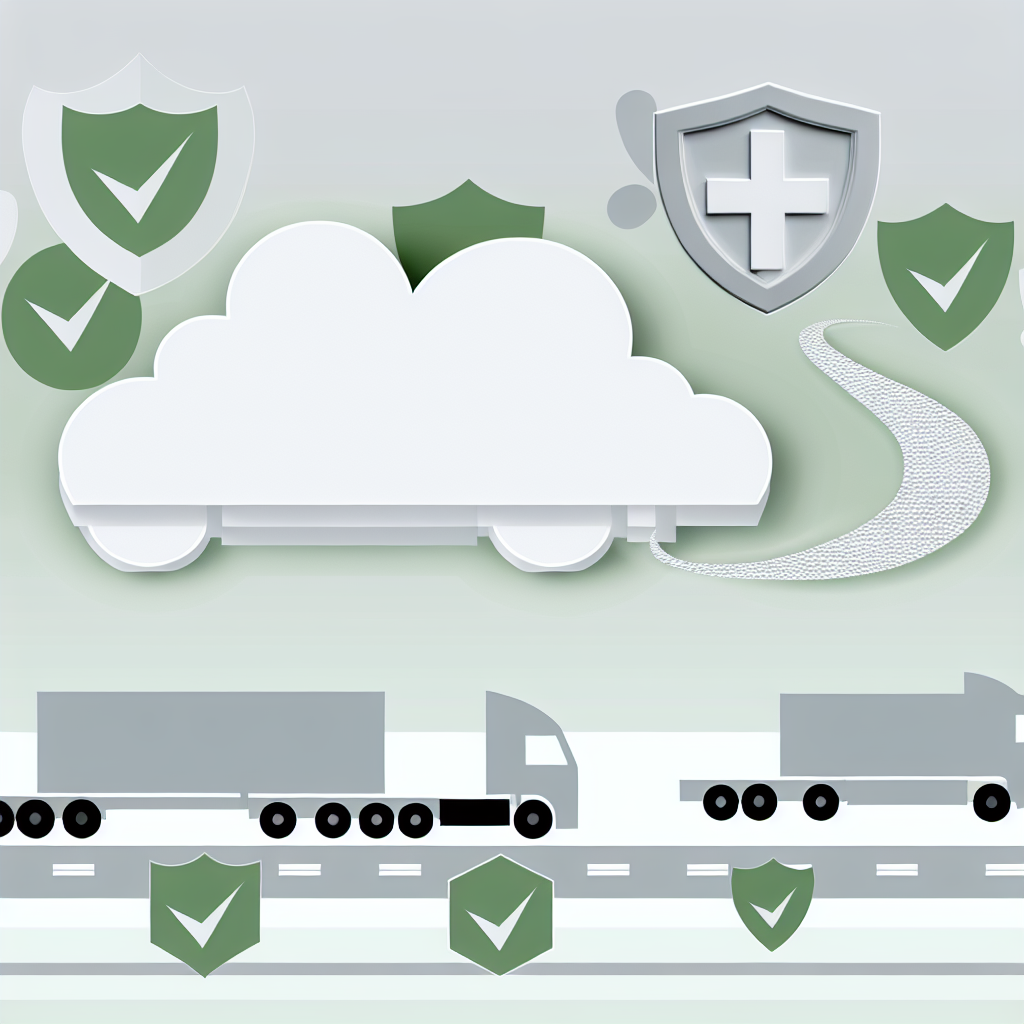As the trucking industry gears up for the anticipated 2027 NOx emissions standards, the spotlight is on the critical need for clarity and consistency in emissions regulations between Canada and the United States. With the standards requiring a significant reduction from 0.2 grams to just 0.035 grams per horsepower hour, concerns among original equipment manufacturers (OEMs) intensify.
These manufacturers have dedicated over five years to prepare for these forthcoming regulations, but the uncertainty surrounding their implementation has left them in a precarious situation. The cross-border nature of the industry, illustrated by over four million vehicles crossing the U.S.-Canada border last year, underscores that disparate regulations could lead to fragmented compliance efforts and increased operational costs.
OEMs, including industry leaders like Daimler Truck North America and Cummins, are calling for immediate clarity on these regulations to ensure that investments in technology align with both nations’ standards, allowing for a smoother transition to cleaner transportation solutions.
As the clock ticks down to 2027, the urgent rallying cry for synchronized regulations becomes more apparent, highlighting a pivotal moment in the quest for environmental sustainability within the trucking sector.
Importance of Emissions Regulations
Emissions regulations play a vital role in shaping the trucking and engine manufacturing industry. These regulations are not merely regulatory hurdles; they represent critical steps towards sustainability and innovation. Here are some key points highlighting their significance:
- Environmental Protection: Emissions regulations aim to reduce harmful pollutants, helping to protect air quality and combat climate change.
- Technological Advancement: Stakeholders, including OEMs, have invested heavily in developing cleaner technologies to comply with these regulations. This is evident as manufacturers have spent over five years preparing for stricter NOx standards.
- Financial Investments: The financial implications for manufacturers are substantial. Companies like Daimler Truck North America and Cummins are channeling resources into research and development to create efficient engines that meet new standards.
- Regulatory Uncertainty: The lack of clarity in regulations creates an unpredictable landscape for manufacturers, leading to hesitations in investment and production. Krista Toenjes highlighted the pressing need for a decision regarding 2027 standards, emphasizing that the waiting game is not sustainable for the industry.
Impact on the Industry
Emissions regulations impact the industry in several ways:
- Market Dynamics: Regions with stricter emissions laws may see shifts in market demand, affecting manufacturers’ strategies and operations.
- Cross-Border Compliance: With over four million trucks moving between Canada and the U.S. annually, inconsistent standards could lead to increased compliance costs and operational challenges for OEMs.
- Investment in Infrastructure: Meeting emissions standards often necessitates investments in infrastructure, including cleaner fuels and charging stations for electric vehicles.
- Consumer Expectations: As public awareness grows about environmental issues, consumers increasingly prefer companies committed to sustainability, further driving the need for compliance with emissions regulations.
As the industry transitions towards these new standards, clarity and consistency in emissions regulations will be paramount. The journey towards cleaner transportation solutions is not just about compliance; it is about innovation and financial commitment towards a sustainable future.
Over the past five years, truck and engine manufacturers have actively pursued compliance with the upcoming 2027 nitrogen oxides (NOx) emissions standards, which require an 80% reduction in NOx emissions from current levels. The significant NOx emissions impact necessitates that these standards will reduce emissions from 200 mg/bhp-hr to 35 mg/bhp-hr for light-heavy duty vehicles and to 50 mg/bhp-hr for heavy-heavy duty vehicles theicct.org.
Investments and Technological Innovations
- Cummins Inc.: The company has updated its X15 engine to meet the 2027 regulations, featuring a redesigned aftertreatment system that includes a shorter and wider diesel particulate filter (DPF) and two selective catalytic reduction (SCR) modules. Notably, it incorporates two 5-kW heaters powered by a 48-volt alternator, which maintain optimal aftertreatment temperatures during low-load operations, ensuring efficient NOx conversion. trucknews.com.
- Daimler Truck North America (DTNA): DTNA is committed to providing a full range of EPA-compliant heavy-duty engines by 2027, emphasizing adherence to EPA requirements across its product lineup, including the Detroit DD13, DD15, and DD16 models ttnews.com.
Industry Collaboration and Regulatory Engagement
In July 2023, the California Air Resources Board (CARB) entered into an agreement with the Truck and Engine Manufacturers Association (EMA) and major manufacturers, establishing the Clean Truck Partnership. This development resulted in amendments to the Omnibus regulation, allowing manufacturers some regulatory flexibility from 2024 to 2026 while maintaining the required emission benefits. For cross-border trucking regulations, harmonization is vital, ensuring that differing standards do not hamper the flow of trucks moving across the U.S.-Canada border while still meeting stringent emissions criteria.
Financial Implications
Substantial financial investments have been made by manufacturers to develop and implement technologies that comply with the 2027 NOx standards. For example, Cummins’ focus on advanced aftertreatment systems and electric heating elements reveals a significant allocation of capital for innovation. Similarly, DTNA’s commitment to modernizing its engine lineup represents a major research and development venture, demonstrating the industry’s dedication to achieving compliance with the forthcoming regulations.
Current Market Performance
As of September 19, 2025, share prices reflect the ongoing market performance amidst these investments, with Cummins Inc. trading at $423.64 and Paccar Inc. at $99.46, indicating minor fluctuations possibly related to regulatory changes and market adjustments.
In conclusion, the efforts of truck and engine manufacturers to invest in new technologies and collaborate with regulatory agencies illustrate a robust commitment to meeting the stringent 2027 NOx emissions standards. The serious NOx emissions impact and the push for harmonized cross-border trucking regulations are essential in strengthening the commitment to compliance while fostering sustainability and environmental responsibility within the trucking sector.
| Aspect | U.S. Regulations (MY 2027) | Canadian Regulations (MY 2027) |
|---|---|---|
| NOx Emission Standard | 0.02 g/bhp·hr over FTP and RMC-SET | Not specified |
| Useful Life | Up to 800,000 miles for heavy heavy-duty diesel engines | Not specified |
| Warranty Period | 450,000 miles or 10 years for heavy heavy-duty diesel engines | Not specified |
| Testing Procedures | New low-load certification cycle and off-cycle emission testing based on MAW methodology | Not specified |
Manufacturers are advised to stay informed about regulatory changes in both the U.S. and Canada to ensure timely compliance and to plan for the necessary technological and operational adjustments.
Expert Quotes on Emissions Regulation Clarity
As the trucking industry navigates the uncertain waters of emissions regulations, voices from key industry leaders resonate with the urgent need for clarity and consistency. Here are insights from prominent figures:
Sean Waters, Vice President of Compliance and Regulatory Affairs, Daimler Truck North America
- “We have to have the same regulations. Canada is a small market compared to the U.S. Canada relies on U.S. certifications for engine emissions and lacks the infrastructure to certify engines independently. We have been preparing for the 2027 NOx standards, and we believe our technology is capable of meeting that challenge effectively.”
Krista Toenjes, General Manager of North America On-Highway Business, Cummins
- “Right now we’re in a waiting game when it comes to 2027. We just want a decision one way or another. We need clarity on that.” This statement reflects the broader sentiment across OEMs as they seek regulatory certainty to allow for better planning and compliance strategies.
Rick Mihelic, Director of Emerging Technologies, North American Council for Freight Efficiency
- “It’s a significant potential challenge for the OEMs to have to produce vehicles that work in two nations. The differing regulations could lead to operational inefficiencies and increased costs.”
Chris Spear, President and CEO, American Trucking Associations
- “California’s stringent zero-emission vehicle regulations may lead to another supply chain crisis if not managed realistically. We need technical justification for these regulatory demands.”
Allen Schaeffer, Executive Director, Engine Technology Forum
- “Balanced regulations must consider both environmental objectives and the practical realities faced by the trucking industry, including compliance costs and the supply chain impacts.”
Together, these voices reinforce the pressing need for unified emissions standards, helping OEMs manage resources more effectively while aiming for their environmental goals.

Implications of Regulatory Misalignment
Misalignment in emissions standards between the U.S. and Canada can cause significant challenges for manufacturers, trade, and technological developments.
Impact on Manufacturers
Traditionally, Canada has aligned its vehicle and engine emission standards with those of the U.S. Environmental Protection Agency (EPA) to make it easier for manufacturers to operate in both markets. This alignment allows companies to use U.S. EPA certification as proof of compliance with Canadian rules, simplifying the process of importing and selling vehicles. However, differences between the regulations in the two countries can disrupt this cooperation.
A noteworthy example is Mark Seymour, President and CEO of Kriska Transportation Group, who shared his experience during a Truckload Carriers Association meeting in September 2024. He mentioned the challenges created by the EPA’s Phase 3 greenhouse gas reduction rule, which he criticized as excessive due to its high costs and operational demands. “We are committed to reducing pollution, but this approach is too costly and not suitable for wide implementation,” Seymour stated. His remarks highlight the intense pressures facing trucking companies as they try to comply while remaining profitable. (Source).
Sean Waters, of Daimler Truck North America, adds to Seymour’s concerns. He explained in September 2025 that the uncertainty surrounding emissions regulations slated to take effect in January 2027 has put OEMs in a tough position. After investing significant resources to meet the new EPA27 NOx standards, Waters underscored that differing regulations could complicate cross-border operations, leading to more compliance costs and operational challenges. “We must have the same regulations. It is critical for our planning and resource management strategies,” he noted. (Source).
Impact on Trade
Trade conflicts arising from different regulations can lead to tariffs and retaliatory measures that affect cross-border commerce. For instance, the U.S. has imposed tariffs on Canadian steel and aluminum, prompting Canada to respond similarly. This creates risks of:
- Disrupted supply chains
- Increased production costs
- Uncertainty for industries reliant on cross-border trade
Brad Delco, Senior Vice President of Finance at J.B. Hunt Transport Services, discussed this issue in August 2024, indicating that divergent emissions regulations across states and countries complicate cross-border trucking logistics. Delco pushed for federal-level regulation to ensure consistency, mentioning that differences—like those between California and federal standards—pose operational challenges for transportation companies vital to freight markets. He advocated for uniform regulations to facilitate efficient cross-border logistics (Source).
Impact on Technological Developments
Differing emissions standards can influence the pace and direction of technological progress. Manufacturers may need to create various technologies to comply with diverse regulations, potentially limiting their resources for unified research and development efforts. In contrast, aligned regulations can create a larger, cohesive market for new technologies, encouraging investment and speeding up the adoption of innovations like electric vehicles and cleaner manufacturing processes. Misalignment may also affect a company’s competitiveness as they navigate differing regulatory environments that impact product design and market strategies (Power Magazine).
In closing, regulatory mismatches between the U.S. and Canada in emissions standards can lead to higher operational costs for manufacturers, disrupt trade relationships, and shape the future of technological advancements. Coordinated policy efforts are essential to minimize these challenges and promote a stable and innovative industrial environment.
Conclusion
In conclusion, the necessity for clear and consistent emissions regulations between Canada and the United States is becoming more urgent as the 2027 NOx standards approach. Original equipment manufacturers (OEMs) have invested significant resources over the past five years in preparing for these forthcoming regulations, exemplifying their commitment to environmental sustainability and technological advancements. However, with the looming uncertainty surrounding the implementation of these standards, OEMs express a unified desire for clarity and alignment in regulatory practices across borders.
Industry leaders, including Sean Waters and Krista Toenjes, articulate the pressing need for decisive actions that may foster a smoother transition to compliance. They advocate for regulations that do not only protect the environment but also support sustainable business practices. As the clock ticks toward 2027, OEMs are hopeful that regulatory bodies will come together to establish a framework that minimizes fragmentation and ensures a unified approach, ultimately enabling the industry to thrive while supporting broader environmental goals. The collective efforts and aspirations of these manufacturers illuminate a path towards a more sustainable future, where consistent regulations empower innovation in the trucking sector and beyond.
For more perspective on the importance of emissions regulations, consider reading Truck News on OEMs and emissions regulation clarity. Additionally, to understand the broader context of environmental protection measures, check out resources from the Environmental Protection Agency (EPA).
Cross-Border Vehicle Movement Statistics
In 2022, cross-border vehicle movements between the United States and Canada experienced notable changes, with over 4 million vehicles crossing the border. Specifically, truck border crossings saw a slight decline of 1.6% compared to 2021, indicating that trade is still navigating recovery from pandemic-era disruptions. Meanwhile, personal vehicle crossings increased significantly by 8.9%, showcasing the importance of cross-border travel for leisure and business purposes.
Statistics Summary
| Crossing Type | 2021 | 2022 | Change |
|---|---|---|---|
| Total Crossings | 3,746,257 | 4,000,000 | +6.8% |
| Truck Crossings | 1,515,876 | 1,489,992 | -1.6% |
| Personal Vehicle Crossings | 12,224,431 | 13,345,500 | +8.9% |
Implications of Emissions Regulations
The emissions regulations in both countries have a far-reaching impact on this trade. For instance, the Canadian government intends to implement more stringent regulations compared to U.S. standards, which could lead to operational challenges for manufacturers. Automakers have expressed concerns that disparate regulations may increase compliance costs and complicate cross-border operations, ultimately undermining the aim of enhancing sustainability across the North American automotive market.
Moreover, the delay in Canada’s zero-emission vehicle (ZEV) sales mandate reflects the economic pressures facing the sector. If the ZEV mandate significantly diverges from those in the U.S., it could disrupt supply chains and complicate the relationship between these two interlinked markets. OEMs are calling for a harmonization of regulations to foster a more consistent and efficient trading environment, essential for the long-term viability of the automotive industry.
Sources:
Stakeholder Perspectives
In the ever-evolving landscape of emissions regulations, original equipment manufacturers (OEMs) like Daimler Truck North America and Cummins find themselves navigating a complex web of stakeholder perspectives. Each player in the industry, from manufacturers to regulators, brings distinct viewpoints shaped by their interests and strategic goals regarding the implementation of emissions standards.
OEMs: Seeking Clarity and Alignment
Both Daimler Truck North America and Cummins have voiced concerns over the lack of clear regulations, emphasizing that alignment between U.S. and Canadian standards is not just beneficial but essential. According to Sean Waters of Daimler, the variability in emissions regulations can lead to increased operational costs and inefficiencies. “We have to have the same regulations,” he stresses, underscoring the need for cross-border consistency to facilitate smoother compliance efforts and enhance the effectiveness of their investments.
Krista Toenjes, from Cummins, echoes this sentiment, stating, “Right now we’re in a waiting game when it comes to 2027. We just want a decision one way or another. We need clarity on that.” This waiting game places OEMs in a precarious position, hindering planning and resource allocation as they strive to meet stringent regulatory standards.
Regulatory Bodies: Balancing Economic and Environmental Goals
On the regulatory front, authorities face the dual challenge of pursuing environmental sustainability while also considering the economic implications of new regulations. They must ensure that emissions standards effectively reduce pollutants without placing an overwhelming burden on manufacturers.
The California Air Resources Board (CARB), as an example, is engaged in initiatives to align state regulations with federal standards. However, conflicting goals between environmental targets and industry capabilities can lead to tension. Regulators must weigh the importance of ambitious emissions targets against the realities faced by OEMs, particularly regarding compliance costs and market viability.
Industry Groups and Advocacy Organizations: Voices for Change
Industry groups and advocacy organizations also play a critical role in shaping the dialogue around emissions regulations. They advocate for regulations that both safeguard the environment and support economic growth within the trucking sector. The North American Council for Freight Efficiency perceives the lowering of emissions standards as a significant challenge for OEMs and has called for the establishment of a clear regulatory framework that supports innovation while maintaining environmental objectives. Advocacy groups press for regulations that are equitable, feasible, and conducive to the development of clean technologies.
Conclusion
In summary, the perspectives on emissions regulations are varied and multifaceted across stakeholders in the trucking industry. OEMs like Daimler and Cummins are united in their call for clarity and consistency, while regulatory bodies and advocacy groups must navigate the balance between environmental imperatives and industry realities. As the implementation of the 2027 NOx standards approaches, the discourse around emissions regulations remains a pivotal topic, highlighting the need for collaboration and agreement among all parties involved to foster a sustainable future in the trucking sector.


